The plan for buses to Matthews faces doubts
Questions arise about the feasibility and cost of implementing bus rapid transit along the Independence Boulevard corridor
You’re reading Transit Time, a weekly newsletter for Charlotte people who leave the house. Cars, buses, light rail, bikes, scooters … if you use it to get around the city, we write about it. Transit Time is produced in partnership between The Charlotte Ledger and WFAE.
Replacing the uptown-to-Matthews light rail segment with bus rapid transit might not be feasible; no room for stops on Independence, NCDOT says
by Steve Harrison
WFAE
Two months ago, Charlotte officials and business leaders reached a compromise on their multi-billion dollar transportation plan.
To please Republican lawmakers in Raleigh and move the stalled plan forward, they agreed to spend more on roads and less on rail transit. Under the compromise plan, if Mecklenburg voters approve increasing the sales tax in November 2025, Charlotte would spend 40% of new tax money on roads and no more than 40% of that money on rail transit.
That created a big problem.
With less money for trains, Charlotte couldn’t afford to build everything it had envisioned. The original transit plan called for building the Red Line to Lake Norman; extending the Blue Line to Ballantyne; expanding the Gold Line streetcar; and building the biggest project, the Silver Line from the airport to Matthews.
Behind closed doors, the city pledged to build the Red Line first. That’s because it has been part of the original transit plan from 1998 and because the three northern Mecklenburg towns are a powerful voting bloc that already feels slighted by what they see as unfulfilled promises.
Charlotte then quietly decided to kill the train from uptown to Matthews — despite having spent roughly $43 million to design the line. ($43 million!)
The city has said it will build bus rapid transit, or BRT, instead.
But a review of the city’s plans and finances — as well as plans already put in place by the N.C. Department of Transportation — raises questions about whether BRT is feasible along the U.S. 74 corridor.
Matthews officials are skeptical.
“So what we will end up with are big fancy buses sitting in traffic with cars,” said Commissioner Renee Garner at a meeting Monday. “And Matthews will be paying for it.”
Added Mayor John Higdon: “I would bet my house — and you can come get it if I’m wrong — that if BRT is built in Mecklenburg, it won’t be true BRT, and we won’t have true 100% dedicated lanes.”
Bus rapid transit means special lanes reserved for buses. They often operate in their own right-of-way, avoiding traffic lights. People board them from stations with raised platforms and sometimes climate-controlled waiting rooms.
When done correctly, BRT can be just as fast as a train — and less expensive.
Here’s what a BRT project in Miami looks like:
But there are several problems with Charlotte’s 11th-hour switch from train to bus.
The first: There is no plan. The city doesn’t know where a dedicated bus lane would go.
The Charlotte Area Transit System told Transit Time that it “does not have any current design for BRT in the Silver Line corridor. The last study that evaluated BRT in the Southeast Corridor was in 2006.”
That was nearly 20 years ago. At that time, the general plan was to place the BRT lanes alongside Independence Boulevard.
But that won’t work now.
The N.C. Department of Transportation has spent years designing an expansion of the highway from uptown to Conference Drive, close to East Mecklenburg High School, which is about halfway to Matthews. The DOT is adding express toll lanes in the middle of the highway, and a future project would extend them to Matthews.
In theory, those lanes would be perfect for BRT because traffic is guaranteed to move at a high speed, around 45 or 55 mph. That’s how CATS is using the I-77 toll lanes in north Mecklenburg for its express buses.
The problem is there is no place to put the stations.
N.C. DOT deputy division engineer Sean Epperson told Transit Time it’s too late for BRT to be a part of the expansion, which could begin in four years.
“There will not be space along the express lanes for any stations or accommodations to get pedestrians to the center of the roadway for stops of any kind,” he said.
Buses could use the express lanes on Independence, but they would have to exit and then drive a short distance to a station. That would take the “rapid” out of Bus Rapid Transit. It might even be slower than existing bus service.
So what to do?
Former CATS executive Ron Tober has long supported the idea of BRT in the Independence corridor instead of light rail. He has said light rail from uptown to Matthews was too expensive — estimated to cost $5.1 billion. (That was around 2020. It’s probably gone up significantly since then.)
He said this week that Charlotte could build the BRT lanes in the same path planned for the train. That route called for the train to run on the south side of Independence, and then follow Monroe Road to Matthews.
Building BRT instead of rail would mean CATS wouldn’t have to spend money on rails and an overhead catenary system. It wouldn’t need to buy expensive rail cars.
But BRT in its own right-of-way would still be expensive. The city would have to buy land. It would have to build new lanes and bridges over existing roads. It would have to build stations and parking decks.
No one has done a cost estimate for BRT. It would be less expensive than light rail, but would still likely cost several billion dollars.
The draft bill for the sales tax and a new transit authority, which would still have to be approved by the General Assembly, calls 20% of new tax revenue to be spent on buses.
That pot — estimated to be $3.8 billion over 30 years — could be used for BRT.
But there will be competing interests for that money. In a City Council transportation committee meeting Tuesday, the city said it wants to expand the bus system. It also wants to use some of that money for a new on-demand transit service it calls “micromobility.”
City staff members mentioned BRT in passing, but it’s unclear if Charlotte would have enough money left over — even with grants from the Federal Transit Administration.
There are other questions.
1. While Charlotte can no longer afford to build all of the planned rail lines, why did the Silver Line to Matthews get axed?
Why did the city not decide to build half of it — from uptown to, say, Idlewild Road? To pay for that, it could have axed the Silver Line to the airport. Or killed the Blue Line extension to Ballantyne.
Matthews Commissioner Ken McCool said he’s frustrated there was never any public discussion about how to modify the plan.
“How many public meetings have they hosted when they decided they wanted to change it to bus rapid transit? Zero,” McCool said. “Not a single constituent has been heard. Not a single person has been to a public building and talked about this and been able to voice their opinions. Not a single one.”
The Silver Line was initially envisioned as a 26-mile line between Matthews and the airport area. But a new deal on transit funding could ditch the portion between uptown and Matthews. (Map from City of Charlotte)
2. The decision to extend the Blue Line to Ballantyne is particularly strange.
While it makes sense from an operational standpoint (it’s cheaper to run existing trains longer on an existing line than to run them on a new line), there are reasons why it’s puzzling.
One: The town of Pineville had the opportunity to have the original Blue Line 20 years ago but said it didn’t want it. Now, it’s moving to the near front of the line.
Two: Of all the proposed rail lines, it’s the least farthest along in terms of engineering and design already done. In fact, CATS hasn’t spent any money so far on it.
Three: From an equity standpoint, why bring the train to one of the wealthiest parts of Mecklenburg County as opposed to east Charlotte?
Matthews Commissioner Garner mocked the city’s plan as “Ballantyne-first.”
CATS has been studying the expansion of the Blue Line into Pineville and Ballantyne for at least five years. The proposed light rail line is in blue. (Courtesy of CATS)
3. Building light rail from uptown to the airport is a head-scratcher, in part because the airport stop isn’t at the airport. It will be on Wilkinson Boulevard, one mile from the terminal.
CATS and the airport have said they will either have shuttle buses or a people mover to take people from the station to the terminal.
If the plan is to have the airport station not at the airport, is that really the best way to spend transit tax money?
4. Is there still money to finish the Gold Line streetcar? Should it be finished?
As originally envisioned, the Gold Line streetcar would extend in a third phase to the east down Central Avenue and to the west down Beatties Ford Road:
A fully built Gold Line would run from Beatties Ford Road and I-85 in west Charlotte to the former Eastland Mall in east Charlotte. (Courtesy of CATS)
But with the first two phases open, the streetcar has been a disappointment from a ridership perspective. It’s carrying fewer than half as many people as projected.
CATS has said ridership is improving since switching to a more frequent schedule at the start of April.
But there’s no real evidence of that yet. Ridership in April-May-June 2024 (when trains came every 20 minutes) was up just 1% compared with ridership in April-May-June 2023 (when trains came every 30 minutes).
During the transportation committee meeting Tuesday, some council members gingerly asked how city staff came to these decisions.
Renee Johnson said there was no transparency in the process. Malcolm Graham was also frustrated and wanted to know about the streetcar. Marjorie Molina also asked about the impact of the BRT change on east Charlotte.
City Manager Marcus Jones is pushing off hard questions about the transit plan onto an authority, which doesn’t yet exist. (Photo by Steve Harrison)
City Manager Marcus Jones distanced himself from any hard decisions. He said he never told Matthews the Silver Line wouldn’t be built, only that there wasn’t enough money to do everything.
(Matthews Mayor John Higdon says that’s not true.)
Jones then dodged additional questions by saying future decisions would be made by a new transit authority instead of the city.
The problem with that answer is that the city wants voters to approve a new transportation sales tax increase in November 2025 — before the transit authority would be up and running.
Voters might understandably have questions about what’s in the plan and what can be built. They might want a better answer than: “The next guys will figure it out.”
Steve Harrison is a reporter with WFAE, Charlotte’s NPR news source. Reach him at sharrison@wfae.com.
—
Related Transit Time/Ledger articles:
“Revised transit plan would scrap 1/2 of Silver Line, Matthews mayor says” (May 30)
“Matthews and eastside leaders slam light rail cuts” (May 31)
“Charlotte backs transit plan, but Matthews calls it ‘inequitable’” (Aug. 12)
In brief…
Opening date for I-485 toll lanes pushed back: The express toll lanes on I-485 in south Charlotte, from I-77 to Independence Boulevard, are now projected to open in late summer 2025, NCDOT says. (Observer)
Late school buses: There are a handful of Charlotte-Mecklenburg Schools where more than 20% of buses last year were late. Most had start times after 9 a.m. Schools with repeatedly late buses included Turning Point Academy, Metro School and Ranson Middle. (WCNC)
DMV kiosk capabilities expanded: The N.C. Division of Motor Vehicles says its new self-serve kiosks now offer vehicle registration renewals. Alas, the only kiosk in Charlotte is at the Riverbend Village Harris Teeter at 4701 Smith Farm Road. (NCDOT)
Transit Time is a production of The Charlotte Ledger and WFAE. You can adjust your newsletter preferences on the ‘My Account’ page.
Did somebody forward you this newsletter and you need to sign up? You can do that here:
Other affiliated Charlotte newsletters and podcasts that might interest you:
The Charlotte Ledger Business Newsletter, Ways of Life newsletter (obituaries) and Fútbol Friday (Charlotte FC), available from The Charlotte Ledger.
The Inside Politics newsletter, available from WFAE.




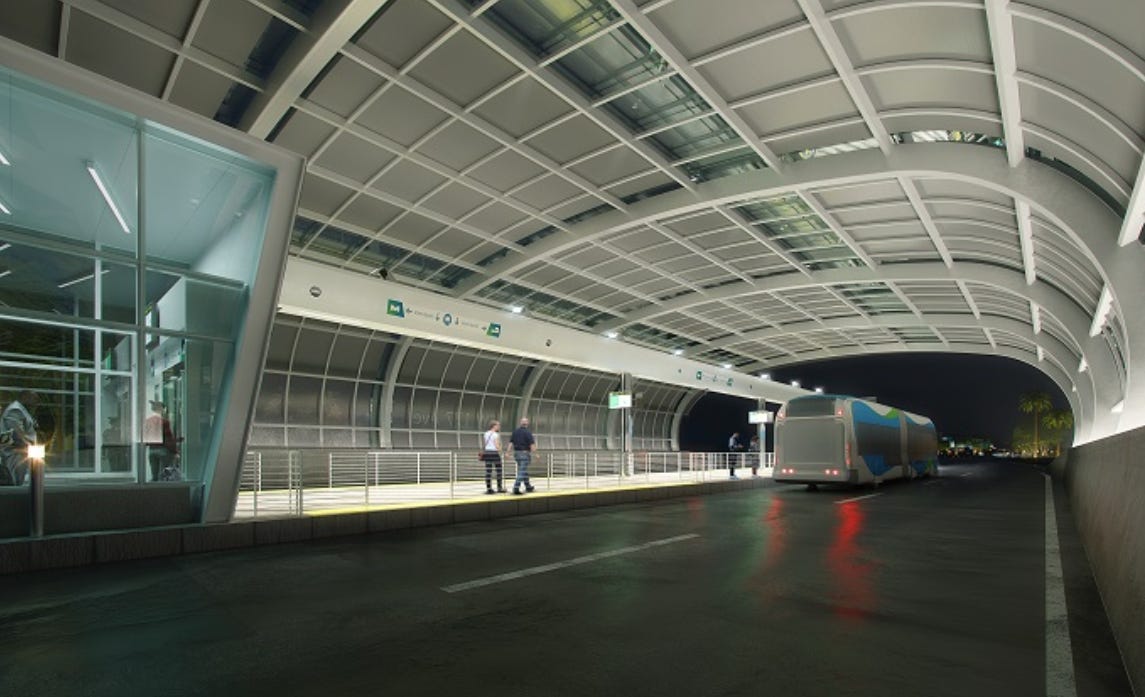
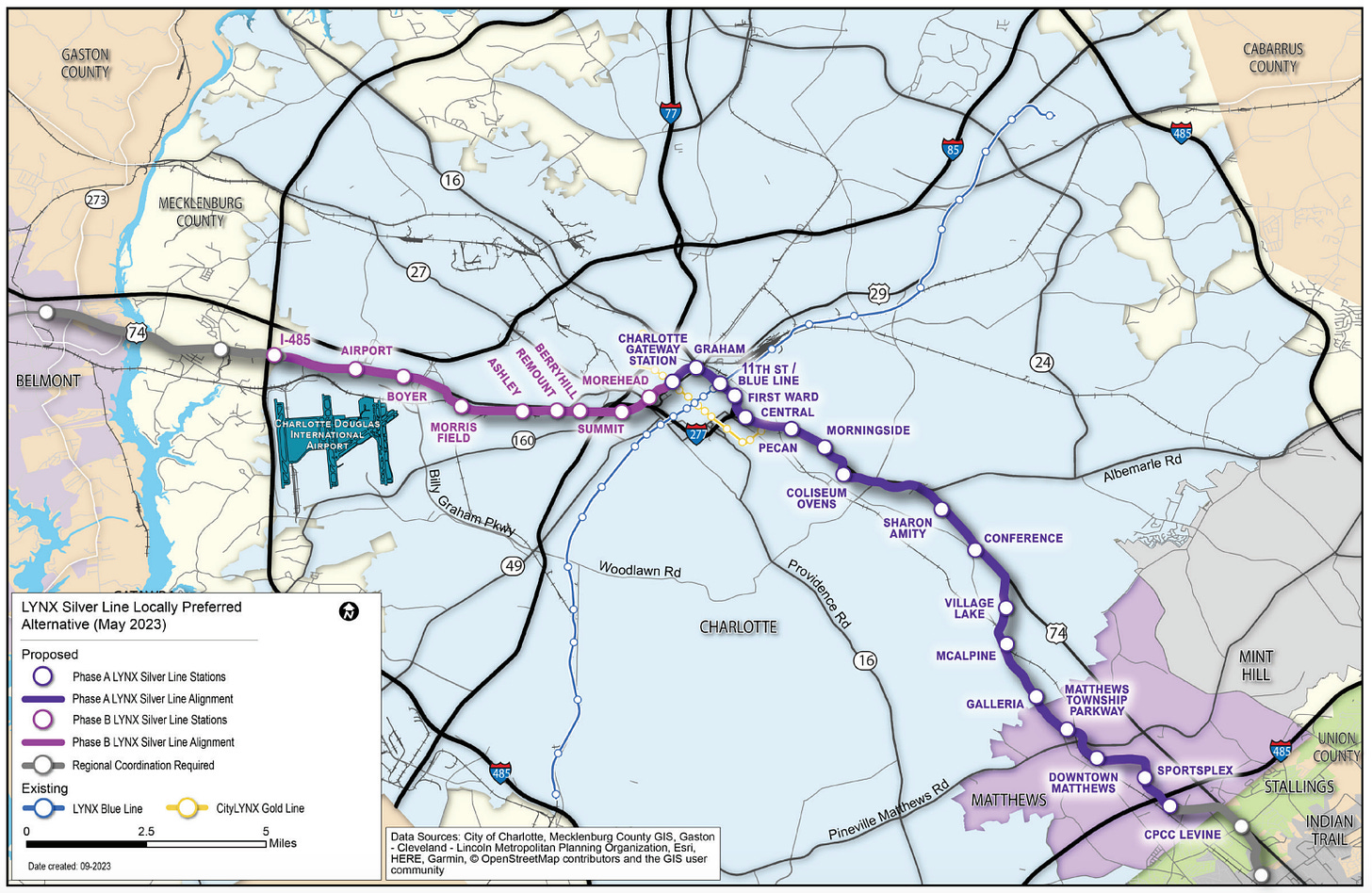
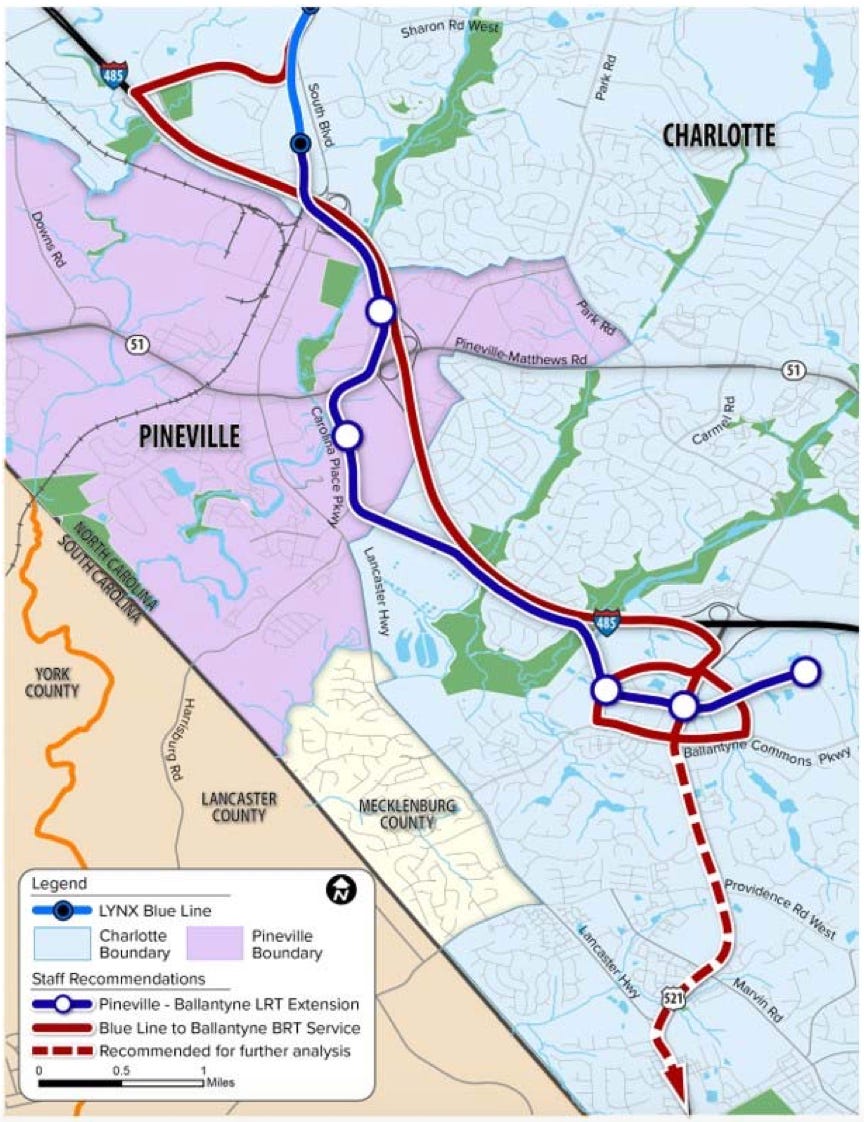
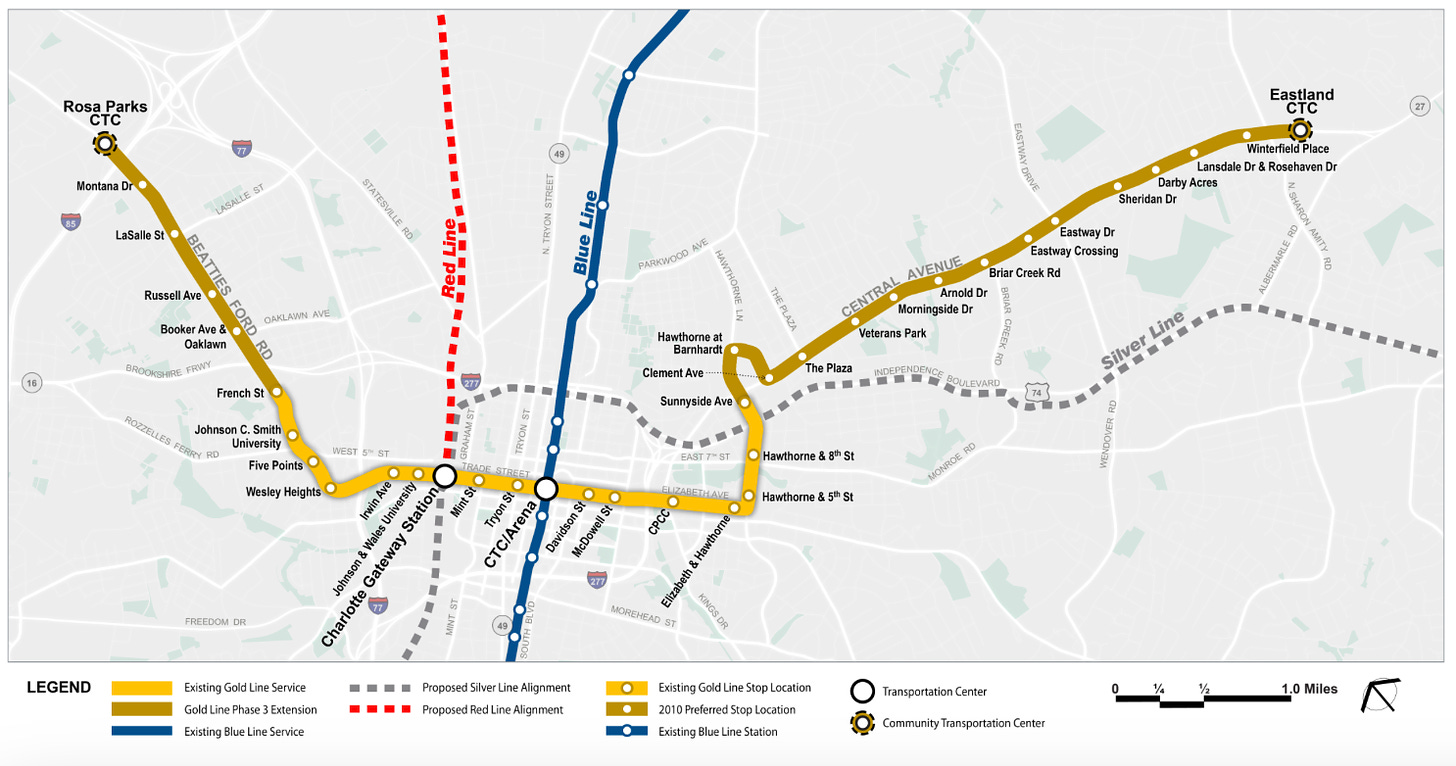
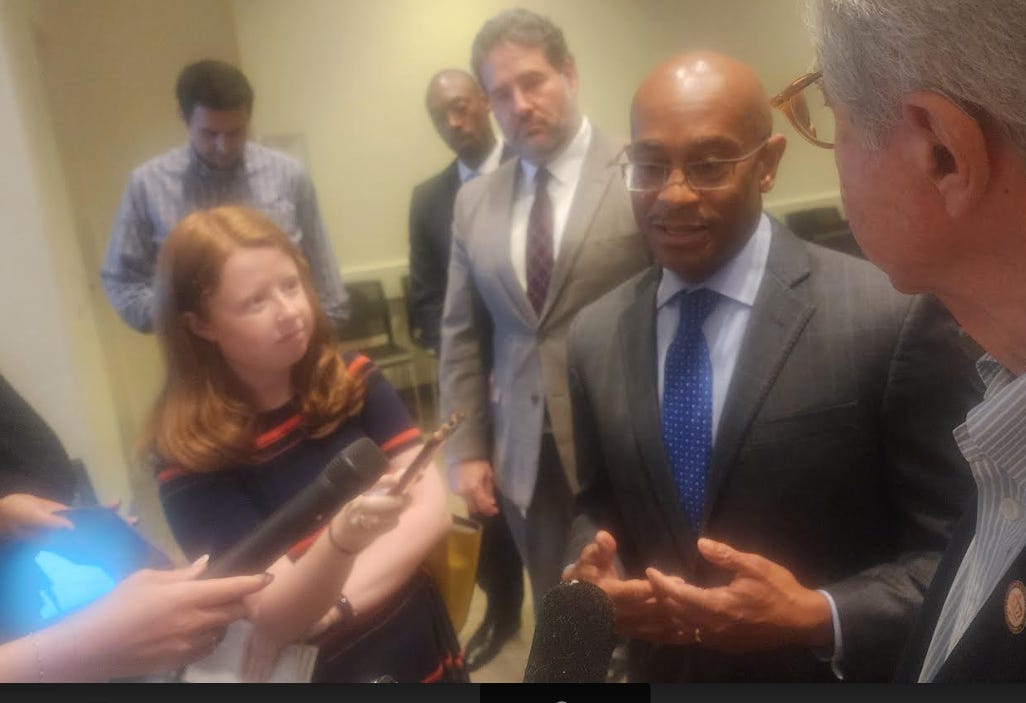

Multiple slam dunk reasons to extend the blue line to Ballantyne (regardless of Pineville’s involvement or Matthew’s commissioners skepticism):
- jobs
- ability of the area to densify
- as mentioned in the article, lower startup costs, which makes the project favorable when there is a limited pool of funds
All of this points to a higher ROI for the Ballantyne segment